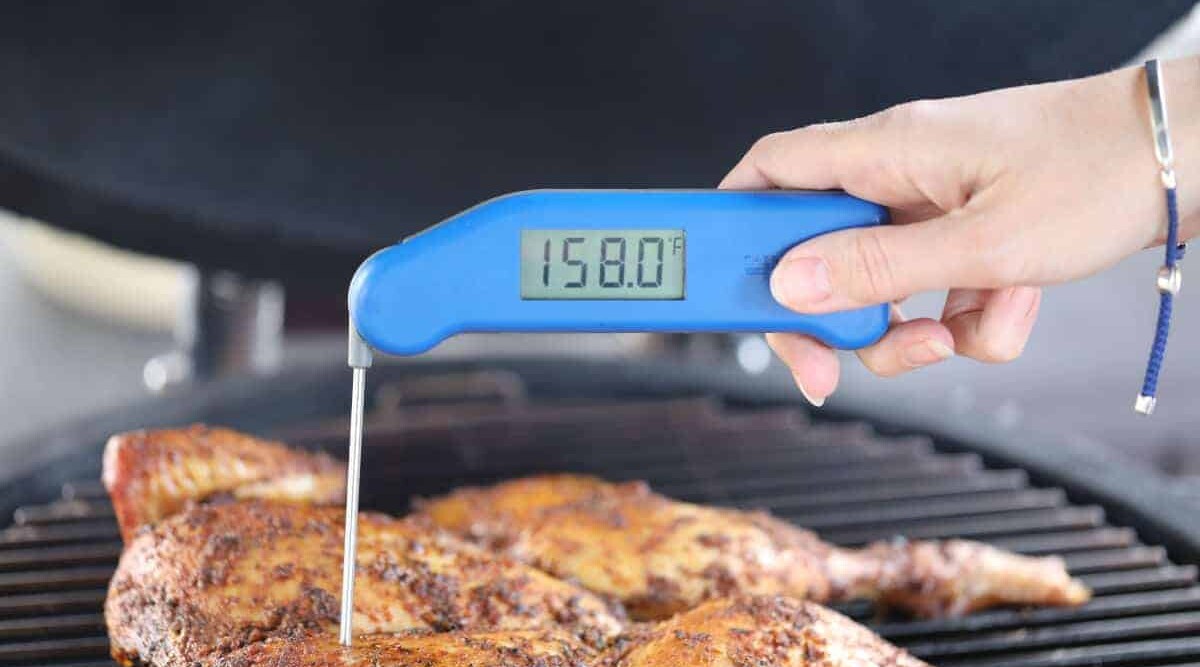
In this article, we look closely at how to use an instant-read thermometer properly.
We also look at the need for thermometers, what an instant-read thermometer (IRT) is, and how to properly care for one. Here, the focus is on function and correct use.
You’ve probably heard an experienced pitmaster say their hands tell them when food is done. Something in the texture, resistance, — something.
But, as has been noted many times on this site, eyes and hands can misjudge doneness. When that happens, it’s an open invitation to embarrassingly overdone or sickeningly (literally) underdone meat.
To have absolute certainty that your food is safe to eat, the Food Safety and Service division of the U.S. Department of Agriculture advises using a thermometer. There’s no better way.
In this article, we’re citing the USDA extensively since they have a lot to say on the subject. They even rolled out an educational campaign, Is It Done Yet? Which covers food handling, storage, and quite a bit on the use of thermometers.
Let’s get to it!
For shopping tips, please read our review of the best digital instant-read thermometers.
Jump to:
- 1 Why an Instant Read Thermometer Should Be in Every Grillers Toolbox
- 2 Food Poisoning 31 Ways
- 3 The Scientific Approach to Doneness
- 4 The Right Way to Use an Instant-Read Thermometer
- 5 Hygiene and Safety Matters
- 6 Quick, Light, and Easy Route to True Grill Goodness
- 7 Key Takeaways on the Need for an Instant Read Thermometer
- 8 Now We Know How to use One, Let’s See How They Work
- 9 Conclusion
Why an Instant Read Thermometer Should Be in Every Grillers Toolbox
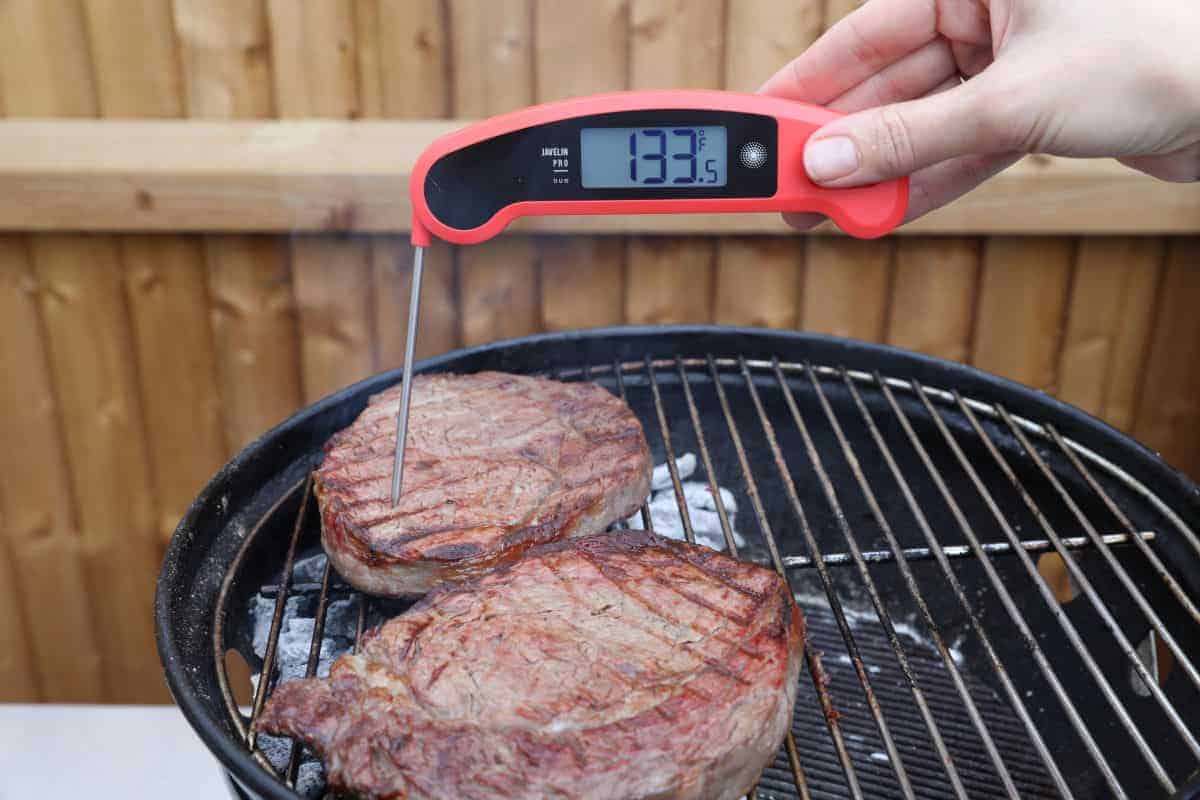
Cooking around the fire is an ancient tradition of community, bringing friends and family closer together. It’s so good, even enemies can become BFFs over a good plate of ‘cue.
So, to preserve the well-being of those we love, a digital instant read thermometer is an essential tool.
I personally own 3 different instant-read thermometers, with the Lavatools Javelin Pro Duo being my go-to product that I use most often. It goes a long way to preventing foodborne illnesses, especially if your circle around the fire includes:
- The elderly
- People battling certain chronic illnesses or with weak immune systems
- Pregnant (and nursing) women
- Fetuses, newborns, and toddlers
The risk of harm from foodborne illness is higher for people in these categories.
Food Poisoning 31 Ways
If you want to know more about what could come of undercooked (or improperly stored) food, a little time browsing the Foodborne Illness page of the U.S. Centers for Disease and Prevention Control will hopefully inspire you to never again cook without a thermometer.
The Scientific Approach to Doneness
In a 2001 USDA study, although the beef was cooked until it looked nice and brown, its temperature was below 160° F, the temperature where e.coli is killed off. This deceptively brown color was especially evident in beef formed into patties after it had been thawed.
Other USDA studies found cooked beef was underdone 40 percent of the time and a pink center was possible in a burger cooked to 160 degrees. This is why you need a thermometer; human senses are not enough to tell when food is safe to eat.
Busted Myth — The Fingertip Reader
A finger can’t tell the age, cut, diet of the animal, amount of exercise it had in its life, or any other factors impacting the density and texture of a piece of meat. Things that can change dramatically how it feels to the touch.
A thermometer can’t detect these things either, but it can tell you the temperature of the meat, how long the meat needs to cook for all bacteria to die. And that is the critical measure of safety.
Luckily for us, temperature also happens to be the perfect and only trustable measure of doneness.
The Right Way to Use an Instant-Read Thermometer
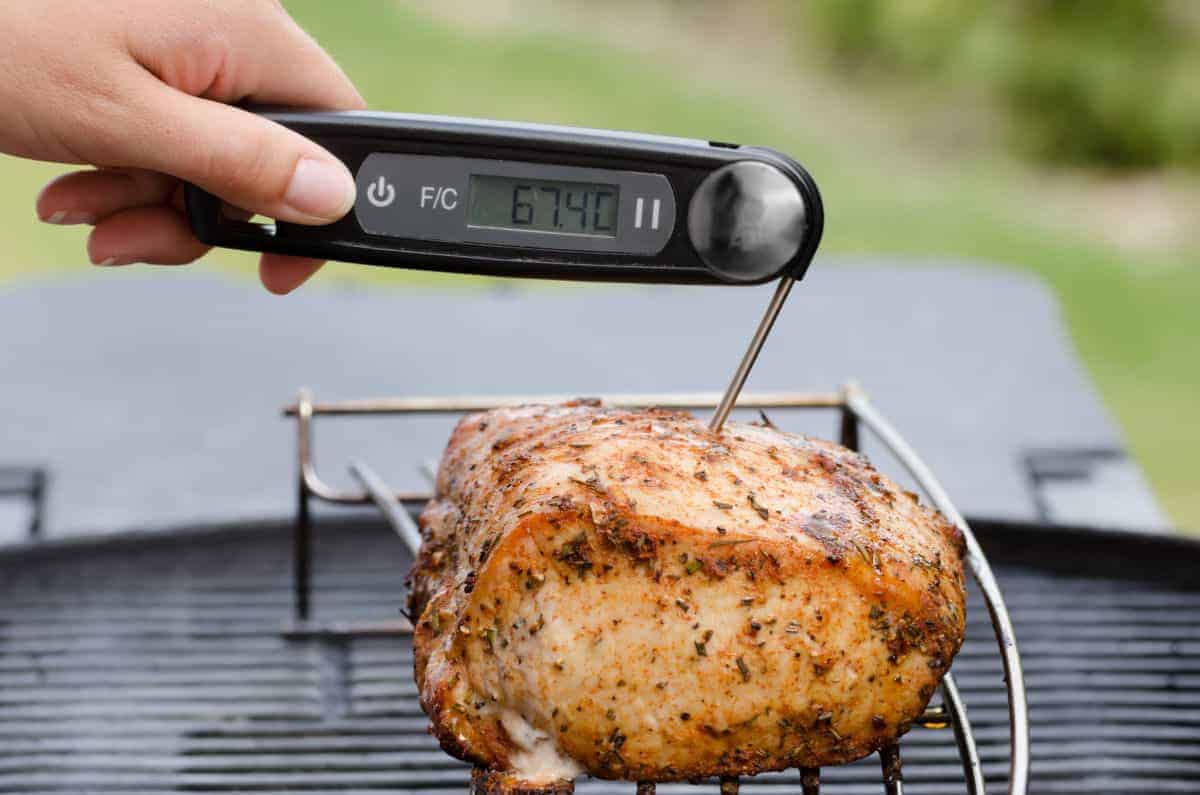
The thermometer should:
- Be inserted into the thickest part of the meat
- Be used when food is near, not at, the end of its cook time
- Be used in more than more location since the composition of the meat and the grill itself can cause food to cook faster in one area than in another
- Be inserted into the side of thin or flat meats (like burgers) Instead of in from the top
- Be inserted into the center of the meat.
The thermometer should not:
- Touch bone. It will give false readings due to the different heat conductivity of bone.
That’s how to use an instant read thermometer correctly, and safely, to ensure accurate readings, consistency and preciseness in your cooking.
Hygiene and Safety Matters
Keeping It Clean
Quick and easy is theme again when it comes to the care of these IRTs.
Before first use — Wash with hot soapy water before using for the first time. Be sure your model is a waterproof model before submerging it into the suds. Otherwise, just clean the part that will be up close and personal with uncooked meat — the probe.
Storage — Models which do not have a folding probe usually have a sheath. Some models come with a storage case, others have magnets to stick to a knife block or side of your fridge.
During Use — Wash between uses, even if those uses are minutes apart. This will prevent the introduction of germs deep into the meat.
Calibrate to Ensure Accuracy Over Time
An occasional accuracy check is done to be sure the IRT is taking temperatures correctly. This is especially important if thermometer is dropped or suddenly taken from one extreme temperature to another.
Many new digital models are self-calibrating. For those that have to be manually calibrated, you’ll need to use the boiling water and ice water methods.
The boiling water should register around 212 °F, the ice water, 32° F. If you live at high elevations, remember the air pressure affects boiling and freezing temperatures, and you’ll have to adjust.
Quick, Light, and Easy Route to True Grill Goodness
Grilling and Smoking
Most thermometers are of a size to provide a comfortable grip and keeps fingers out of burning range.
However, for burgers or other small flat foods, you have to come in from the side to take the temp, and this gets your hand and fingers dangerously close to the grates.
So, try using a spatula to lift the food slightly up from the grill while taking the temperature through the side. Safety in mind!
Outside the Grill
Instant-read thermometers aren’t just for grilling.
Your thermometer can be used in the kitchen to test the doneness of baked goods, roasted meats, candy, and other delights on the stove, in the oven, or nearest cooking gadget.
The thermometer can also be used to ensure foods being served stay out of the danger zone (40–140 °F) by making sure you know if cold foods have gotten too warm, or hot foods have fallen into the danger zone.
Key Takeaways on the Need for an Instant Read Thermometer
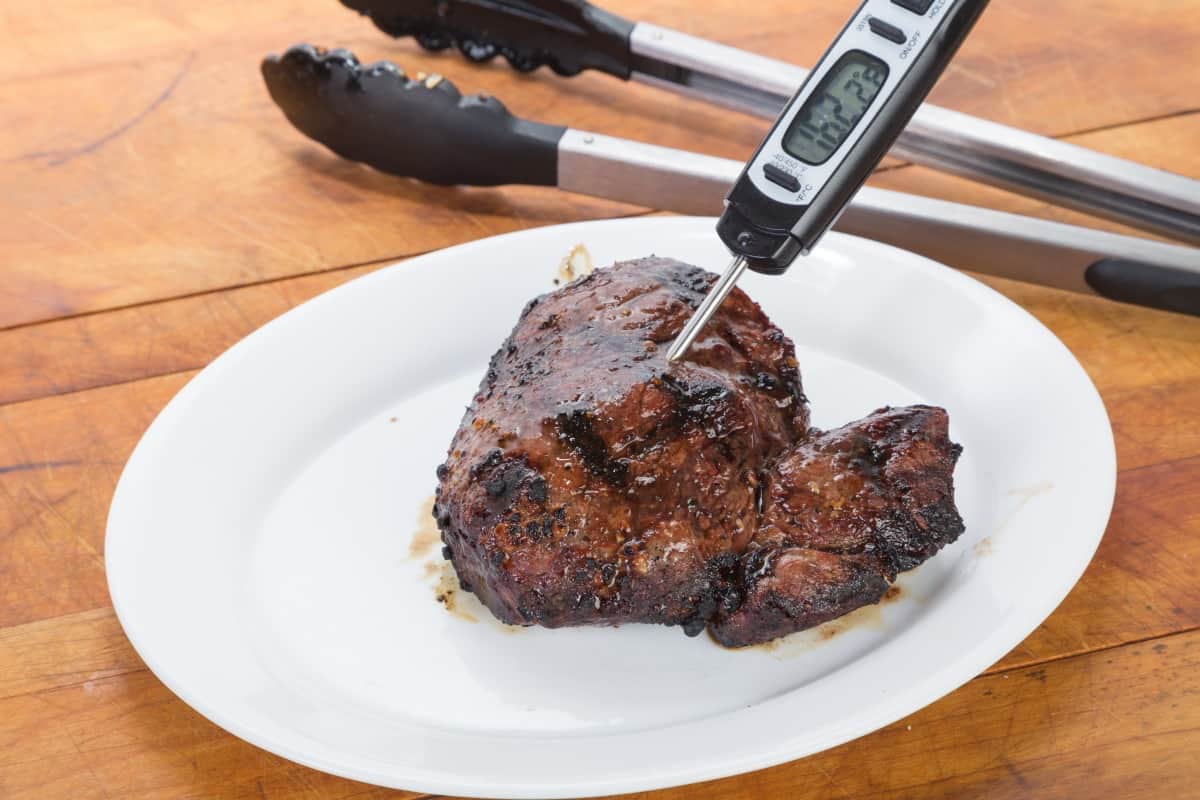
Digital instant-read thermometers are light, compact, quick, and easy-to-use. And they are increasingly user-friendly!
From displays which orient to “up” whichever way thermometer is held, to models that turn themselves off to conserve the battery, ease of use is excellent in most models.
Thermometers aren’t just for restaurants and catering businesses. Something so simple and convenient can make your next cooking session not only fun, but as safe as possible, and you can be sure to serve food of the perfect doneness, by making sure it cooks to the ideal temperature.
‘But, just what is this thing and how does it work?’, You may be wondering. So we thought we’d take a little look at the science and tech inside these things.
Now We Know How to use One, Let’s See How They Work
Today there are five main types of food thermometers, and of these, instant-read digital thermometers are a type of thermocouple thermometer.
You can read about it and the other four types (bi-metallic, liquid expansion, resistance temperature, and infrared radiation) at the Learning Center on ThermoWorks.com.
Thermocouple Basics
The principle of the workings of a thermocouple is the ability of a metal to prevent an electric current from moving through it (electrical resistance) varies based on the temperature of the metal.
As the name implies, a couple of metals are joined together to generate a temperature reading. The tip of thermometer is where the metals are welded together, and here’s how temperature is measured:
- Voltage is created when there is a difference in temperature between the two metals. There are three thermocouple types:
- Type J iron-constantan (an alloy, usually 55% copper and 45% nickel, used a lot in electronics)
- Type K nickel-chromium
- Type T copper-constantan
- A point within the circuit set at 32 °F called the cold junction is the base temperature against which the temperature of the joined metals is calculated.
- The difference is the temperature of the meat.
- A microchip converts the number into an LED display.
This all happens within 3 to 10 seconds of the probe being submerged in food or liquid.
IRTs can take readings across a wide range of temperatures; most will measure between -58 and 572° F degrees and are accurate to around 0.9 of a degree. If that makes things more unclear, the folks at Wonkee Donkee, a U.K.-based tool supplier, offer a concise explanation with pictures. The site also provides guidance on the use and care of a digital thermometer.
Construction
Thermocouple probes are constructed of durable and non-reactive material like food-grade stainless steel.
These are housed in durable plastic, silicone, or metal. Depending on the model, the probe may or may not fold up beside or into the body of the IRT.
Display and Features
The temperature is displayed on a small LED screen which may need to be turned on by a small pushbutton near the display. Some models offer the option of changing the reading between Fahrenheit and Celsius.
An auto-rotate feature allows the display to be easily read no matter which way thermometer is turned.
An in-built magnet allows some models to be hung on the fridge when not in use, others have a hook for hanging on aprons, or holes for threading through a lanyard.
Power Supply
Instant-read thermometers are usually powered by an AAA or a 1.5V watch battery. Most have an auto-shutoff feature to extend the battery’s life. They are extremely low powered, and battery life can be more than a year.
Conclusion
And that about wraps up all we can say about our beloved instant-read thermometers.
If you’ve anything to add or anything you’d like to ask, please do so in the comments below.
Happy grilling!



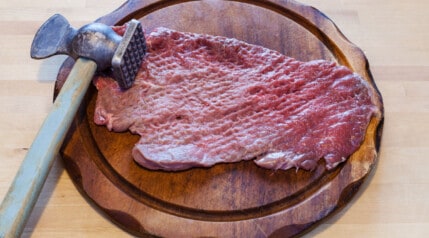
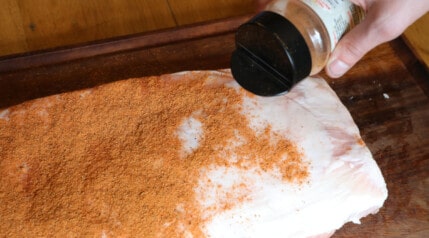
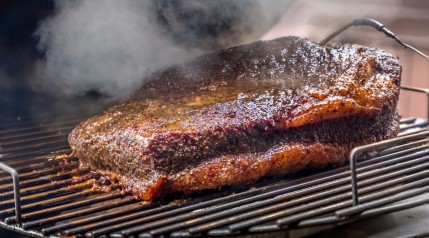
0 Comments